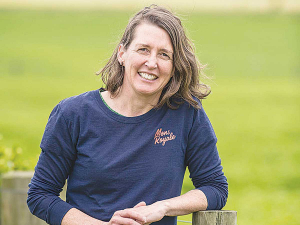GHG emissions up 1.7%
As farmers and tractors took to New Zealand’s motorways, towns and cities to protest the pricing of agricultural emissions, Stats NZ released the country’s quarterly greenhouse gas emissions figures.
 Kelly Forster says by knowing their numbers means farmers are in a position to decide how to make changes.
Kelly Forster says by knowing their numbers means farmers are in a position to decide how to make changes.
Two new information sources to help farmers understand their agricultural greenhouse gas emissions are now available.
Developed under the auspices of He Waka Eke Noa: The Primary Sector Climate Action Partnership, the two resources are the Farm Planning Guidance for Greenhouse Gases and a report on the current tools and calculators that can be used.
Kelly Forster, programme director for He Waka Eke Noa, says knowing a farm's nitrous oxide and methane numbers is the first step towards managing - and knowing how to reduce - on-farm emissions.
"The message is, know your numbers and have a plan."
By the end of 2022, all NZ farms will need to know their greenhouse gas numbers.
"There are now a range of tools that have been assessed as suitable for calculating a farm's biological greenhouse gases, and more are in development and will be assessed soon," Forster explains.
"Measurement is key," Forster explains. "Farmers knowing their numbers mean they are in a position to decide how to make changes to their farming practices to mitigate or reduce emissions."
She adds that every farm is different and not every farmer is expected to reduce their farm's emissions.
"However, the choices each farmer makes to optimise their operation will have a collective impact on NZ's climate change efforts."
Farmers need to know their numbers by the end of 2022 if they farm 80ha or more or have a dairy supply number - or are a cattle feedlot as defined in freshwater policy.
Since December last year, when the first Farm Planning Guidance was released, industry bodies have been incorporating information relevant to their levy payers into their Farm Environment Plans.
The guidance sets out basic principles to guide farmers, growers, and advisors, with practical information on greenhouse gas emissions and to capture carbon.
Help Available
So far, seven different greenhouse gas calculation methods have been assessed and classified: HortNZ, MfE, Alltech, E2M, Fonterra/AIM, Farmax and Overseer.
Meanwhile, other tools are in development and will be assessed and added to the list.
"All farmers knowing their numbers by December 2022 is an ambitious target," says Forster.
She adds that the He Waka Eke Noa's partners are committed to supporting their farmers - including developing new calculators to support farmers across sectors to know their GHG footprint and how to reduce it.
Forster encourages farmers wanting advice to talk to their industry representative, supply company, or other advisors, about knowing their numbers and incorporating GHG into Farm Environment Plans.
Grace Su, a recent optometry graduate from the University of Auckland, is moving to Tauranga to start work in a practice where she worked while participating in the university's Rural Health Interprofessional Programme (RHIP).
Two farmers and two farming companies were recently convicted and fined a total of $108,000 for environmental offending.
According to Ravensdown's most recent Market Outlook report, a combination of geopolitical movements and volatile market responses are impacting the global fertiliser landscape.
Environment Canterbury, alongside industry partners and a group of farmers, is encouraging farmers to consider composting as an environmentally friendly alternative to offal pits.
A New Zealand dairy industry leader believes the free trade deal announced with India delivers wins for the sector.
The Coalition Government will need the support of at least one opposition party to ratify the free trade deal with India.

OPINION: The release of the Natural Environment Bill and Planning Bill to replace the Resource Management Act is a red-letter day…
OPINION: Federated Farmers has launched a new campaign, swapping ‘The Twelve Days of Christmas’ for ‘The Twelve Pests of Christmas’ to…